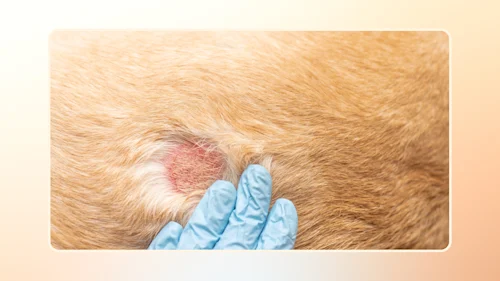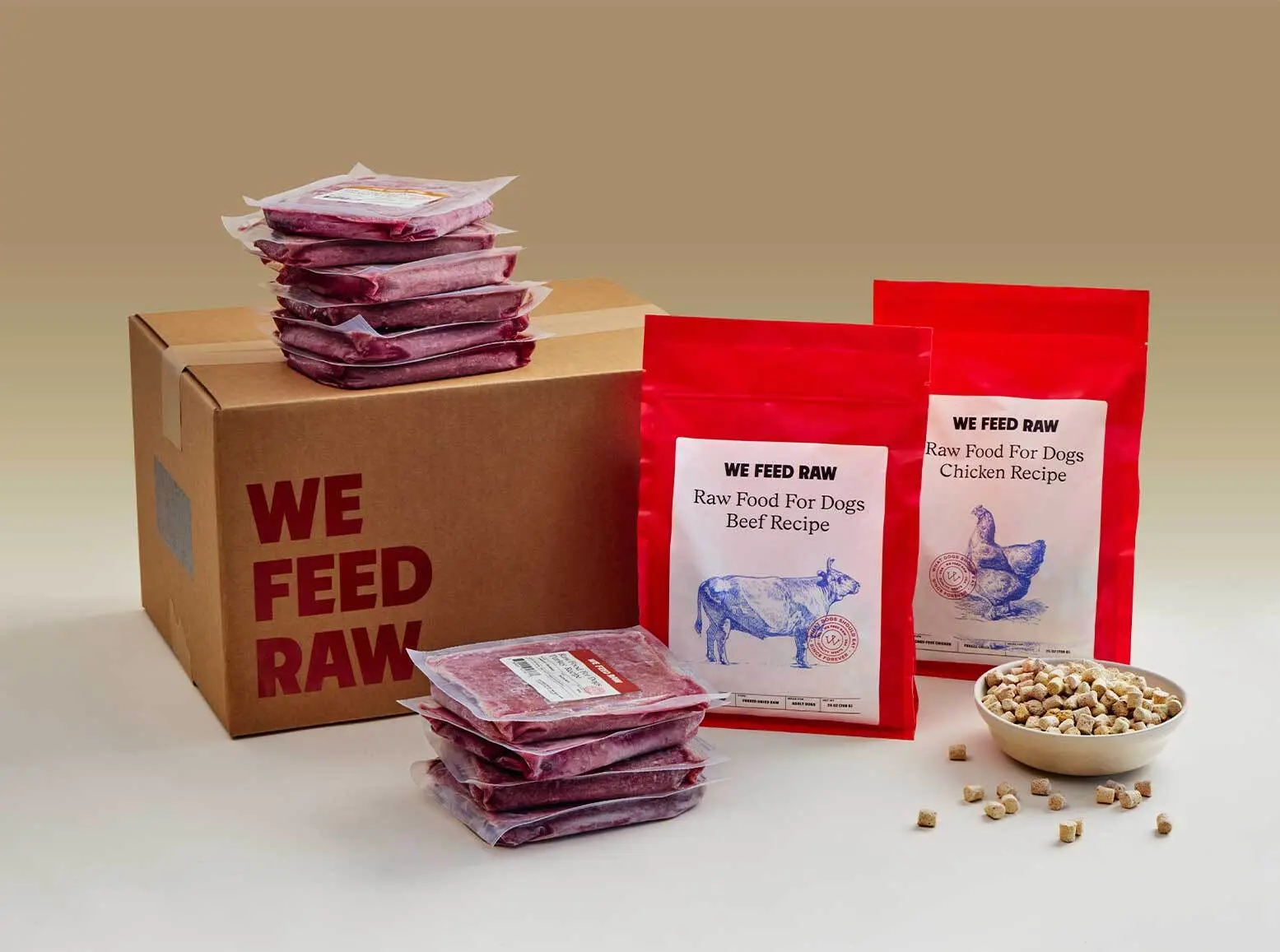
What Is a Hot Spot on a Dog?
As a pet parent, your priority is keeping your dog healthy and safe. However, some things—like skin infections and allergies—can feel outside your control.
It can be alarming if you notice your dog has a hot spot. This skin condition can look painful and be uncomfortable for your dog. Read on to learn more about what to do for hot spots on dogs so you can help prevent and treat them.
What Is a Hot Spot?
A hot spot is a fairly common skin condition in dogs, especially during the hot summer months. They’re also known as acute moist dermatitis and can be found anywhere on a dog’s body, but are especially common on their head, legs, and hips.
A hot spot may be difficult to notice at first, but can quickly spread and worsen, which can be scary for pet owners.
What Does a Hot Spot Look Like on a Dog?
Hot spots typically look the same on all dogs. They often begin as a small red area that can look like a bug bite, but then rapidly worsen into a red, oozing lesion. They are characterized by red inflamed skin and can become infected if not treated right away.
As the name suggests, the affected area is also hot to the touch, swollen, and could have hair loss. These sores are often noticeable, but can also be hidden under matted fur, so it’s important to make sure you’re checking for them if you notice your pet constantly licking a certain area.
What Causes a Hot Spot on a Dog?
Hot spots can be caused by a number of environmental and behavioral factors. However, the experts at Dogs First explain that they occur when a dog's skin bacteria overpopulate a certain area, often over a self-inflicted wound.
This can be triggered by a food sensitivity, periodontal disease, or underlying illness that weakens your dog’s immune defenses. When your dog is uncomfortable because of these reasons, it also causes them to scratch, chew, or lick an area of their skin vigorously and repeatedly, which creates an open wound where this bacteria thrives.
Some of the most common things that cause the initial itching include:
•Food Allergies: Dog food allergies can make your dog feel itchy, especially on their face and paws.
•Ear Infections: An ear infection can be uncomfortable, causing your dog to scratch their ears and neck aggressively.
•Insect Bites: Fleas, mites, and other insect bites can cause your dog to be itchy.
•Matted Fur: Poor grooming creates the perfect environment for hot spots to form. Matted fur, in particular, retains moisture for bacteria to thrive.
While these conditions all cause itching that can lead to skin inflammation, other skin conditions, boredom, and orthopedic problems can also be the cause of hot spots. They're especially common during the hot summer months because of the humidity and activities like swimming that can cause excess moisture to be trapped under their coat.
Does a Dog’s Hot Spot Hurt?
Unfortunately, hot spots are often uncomfortable or painful for pets. This can create a cycle of continuous licking or scratching that only makes the hot spot worse. It’s always best to try to prevent hot spots or treat them ASAP.
Treating Hot Spots at Home
As long as it’s not infected, you can usually treat a dog’s hot spots at home. The experts at Cornell University College of Veterinary Medicine recommend these steps for treating hot spots at home:
•Clean the surface with an antibacterial cleaner like chlorhexidine
•Apply a natural wash rinse, like the one we talk about in detail soon
•Continue treatment until the area develops a healthy-looking scab and let it heal
There are also other more natural remedies you can use to help treat your dog’s hot spot from the comfort of home. Dogs Naturally explains how natural ingredients like crab apple flower essence, echinacea tincture, and witch hazel can create a powerful wash rinse. Similarly, you can make a healing powder with powdered bentonite clay, powdered echinacea, and plantain leaf or yarrow.
Even herbs like calendula or St John’s wort oil can help soothe your dog’s skin and remove the itch while reducing inflammation. It’s important to keep your dog comfortable while their hot spot heals, and these natural remedies can help!
You can also take other steps to help in the healing process, such as giving your dog a bath with chlorhexidine shampoo for dogs and using an Elizabethan collar to stop them from itching or licking the affected area.
Preventing Hot Spots on Dogs
Getting to the bottom of why your dog is scratching is the best way to prevent them from developing hot spots. For instance, managing allergies and feeding your dog a diet that supports a healthy gut and coat can help soothe their skin. Treating underlying skin infections with help from your vet may also be a good preventative measure. And a dog that scratches when bored may need extra exercise or stimulation at home.
Of course, grooming and good hygiene are also a must (especially if your dog has a long coat). This helps your dog’s skin breathe, prevents matting, and can help you identify hot spots before they spread.
The raw diet for dogs with skin allergies is one way to help support a healthy gut, skin, and coat. In fact, 9 out of 10 We Feed Raw clients said their dogs' skin and coat got healthier after switching to a raw diet. That’s because raw diets contain the right balance of amino acids and omega fatty acids that promote the healthy function of skin cells and digestion.
Gut health and skin health are closely connected. When your dog eats a biologically appropriate diet, they have a healthy gut and coat that is less likely to be itchy!
Want to learn more about the benefits of raw food for your pet’s skin? Keep reading here.

Our Meals Change Lives.
(Theirs + Yours.)
See health improvements from our raw meals in as little as 1 week.
